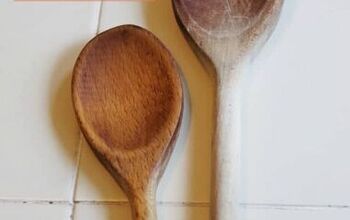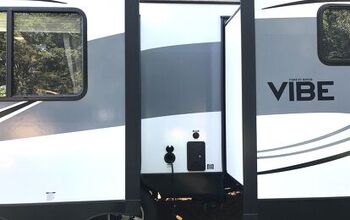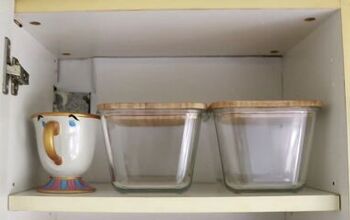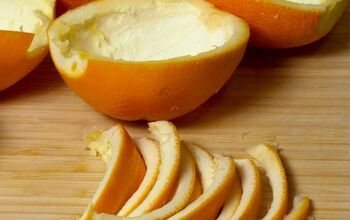Convection Oven Vs. Traditional Oven: Which Bakes Better?

If you’re a baking enthusiast or just someone who enjoys preparing meals at home, you’ve likely come across the debate: convection oven vs. traditional oven.
Both appliances have their strengths and weaknesses, but the question remains—which one bakes better?
To help you decide, let’s break down the differences between the two and see how each performs in various baking situations.
Table of contents
Disclaimer: Simplify may receive a small affiliate commission from purchases made via links in this article but at no cost to you.
How Does Each Oven Work?
Traditional Oven
A traditional oven relies on two heating elements—one at the top and one at the bottom of the oven. These elements heat the air inside, and the heat is distributed by natural convection, which means that warm air rises and circulates unevenly.
This method works well, but it can create hot spots or uneven heating in certain areas of the oven.
Traditional ovens are available in both gas and electric models, and they’re often used for a wide range of baking, roasting, and broiling tasks.
The New York Times rates the Frigidaire Gallery GCRE3060BF as the best traditional oven for baking:
Frigidaire Gallery 30-in Glass Top 5 Burners 5.3-cu ft Self-Cleaning Air Fry Convection Oven
This oven also comes with a convection setting, as well as a Steam Bake option where "steam evenly circulates throughout the oven cavity, resulting in breads and muffins that rise higher and are light and fluffy."
Convection Oven
A convection oven, on the other hand, has a fan and exhaust system that circulates hot air around the food. This feature provides a more even heat distribution and reduces the risk of hot spots. Because the air is constantly moving, convection ovens typically cook food faster and more evenly than traditional ovens.
Convection ovens can come as a standalone unit or be a feature of your traditional oven (sometimes referred to as a “convection setting”).
The Spruce named the Oster Toaster Oven (available on Amazon) the best overall countertop convection oven:
Oster Toaster Oven, 7-in-1 Countertop Toaster Oven, 10.5" x 13"
Baking: The Key Differences
Heat Distribution
The major difference in how these ovens bake is the heat distribution. A traditional oven tends to have uneven pockets of heat due to its reliance on natural convection. This can sometimes lead to inconsistent results, such as unevenly baked cakes or cookies.
In contrast, a convection oven distributes heat evenly thanks to its fan and exhaust system. The air circulation helps maintain a consistent temperature, which can lead to more even browning and cooking across the entire dish. This is especially beneficial for multi-rack baking, as it prevents the top or bottom tray from getting overcooked.
Verdict: Convection ovens excel at even heat distribution, making them a top choice for evenly baked goods.
Cooking Time
Convection ovens can cook food up to 25-30% faster than traditional ovens because the constant air movement accelerates the cooking process. This is great for people who want to speed up their baking, but it does mean you’ll need to adjust recipes accordingly—typically lowering the temperature by about 25°F or reducing cooking time.
Traditional ovens, while slower, are more forgiving when it comes to recipe times, as most baking instructions are written with traditional ovens in mind.
Verdict: If you’re pressed for time, a convection oven’s faster cooking speed is a significant advantage.
Crispiness and Browning
One of the standout benefits of convection ovens is their ability to create crispy and browned exteriors, thanks to the even heat circulation. Whether it’s roasting vegetables, baking pastries, or preparing cookies, the fan action helps achieve that perfect golden-brown color.
Traditional ovens, while capable of browning, may not deliver the same level of crispness. However, they’re still effective for certain dishes like cakes and bread, where a softer texture is often desirable.
Verdict: For dishes that require crisping or browning, convection ovens perform better.
Baking Delicate Foods
While convection ovens have many advantages, they aren’t always the best choice for delicate baked goods like cakes, soufflés, or custards.
The constant movement of air can sometimes cause cakes to rise unevenly or result in a dry texture. Foods that rely on a gentle rise or moisture retention, like cheesecake, often fare better in a traditional oven.
Verdict: For delicate baking tasks, a traditional oven might be your best bet.
Which Oven Is Better for Specific Tasks?
Baking Cookies
When baking cookies, convection ovens have the edge. The even heat and faster baking times result in cookies that are perfectly browned and crispy around the edges without being overdone in the center.
Baking Cakes
For cakes, particularly those that need a consistent rise like sponge cakes, traditional ovens are usually the safer option. The gentler, more predictable heat can help prevent issues like cracked tops or uneven baking that might happen in a convection oven.
Roasting Meats and Vegetables
Convection ovens are superior for roasting. The even circulation of air leads to crisp skin on meats and perfectly caramelized vegetables, all while cooking the food more quickly than a traditional oven.
Pastries
Pastries, like croissants or puff pastries, also benefit from a convection oven. The constant airflow helps create those flaky, crispy layers that are essential to great pastries.
Energy Efficiency
Convection ovens are generally more energy-efficient than traditional ovens because they cook faster and at lower temperatures. If you’re conscious about your energy use, a convection oven can be a good choice, as it gets the job done in less time.
Should You Get a Convection or Traditional Oven?
The decision ultimately depends on your baking habits and preferences. If you’re someone who bakes a wide variety of items and values precision and speed, a convection oven may be the better option. It’s especially good for multi-rack baking, roasting, and achieving a perfect golden finish on baked goods.
However, if you mostly bake delicate items like cakes, bread, or custards, and you prefer following traditional recipes without adjusting times or temperatures, a traditional oven might be a better fit.
Conclusion
Both convection and traditional ovens have their strengths, but when it comes to even baking, crispness, and speed, the convection oven typically comes out on top. However, for certain delicate bakes, you can’t go wrong with a traditional oven.
The best choice really depends on what you bake most often and whether you value faster cooking times and better browning. Ideally, if you have the option, having a combination of both—perhaps in an oven that offers a convection setting—might give you the best of both worlds.
What kind of oven do you think is best? Let me know down in the comments.


































Comments
Join the conversation